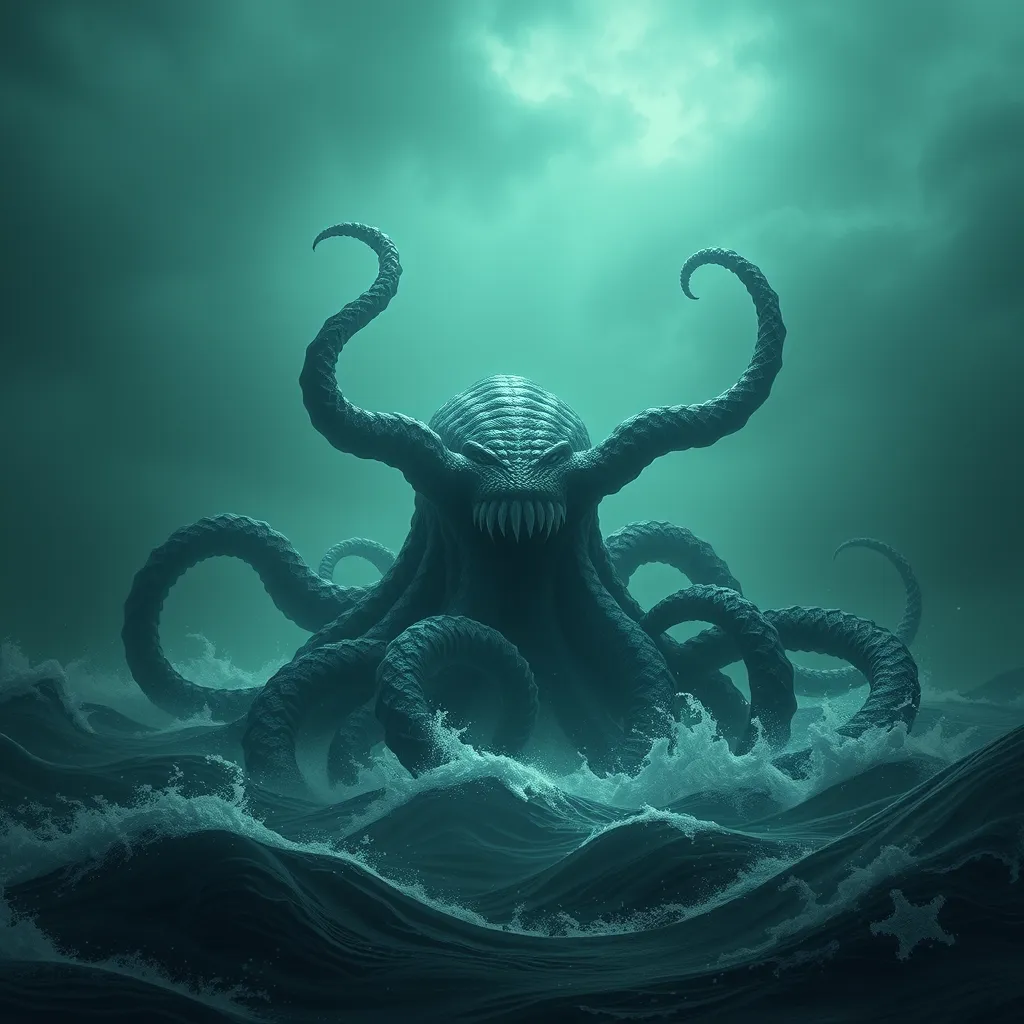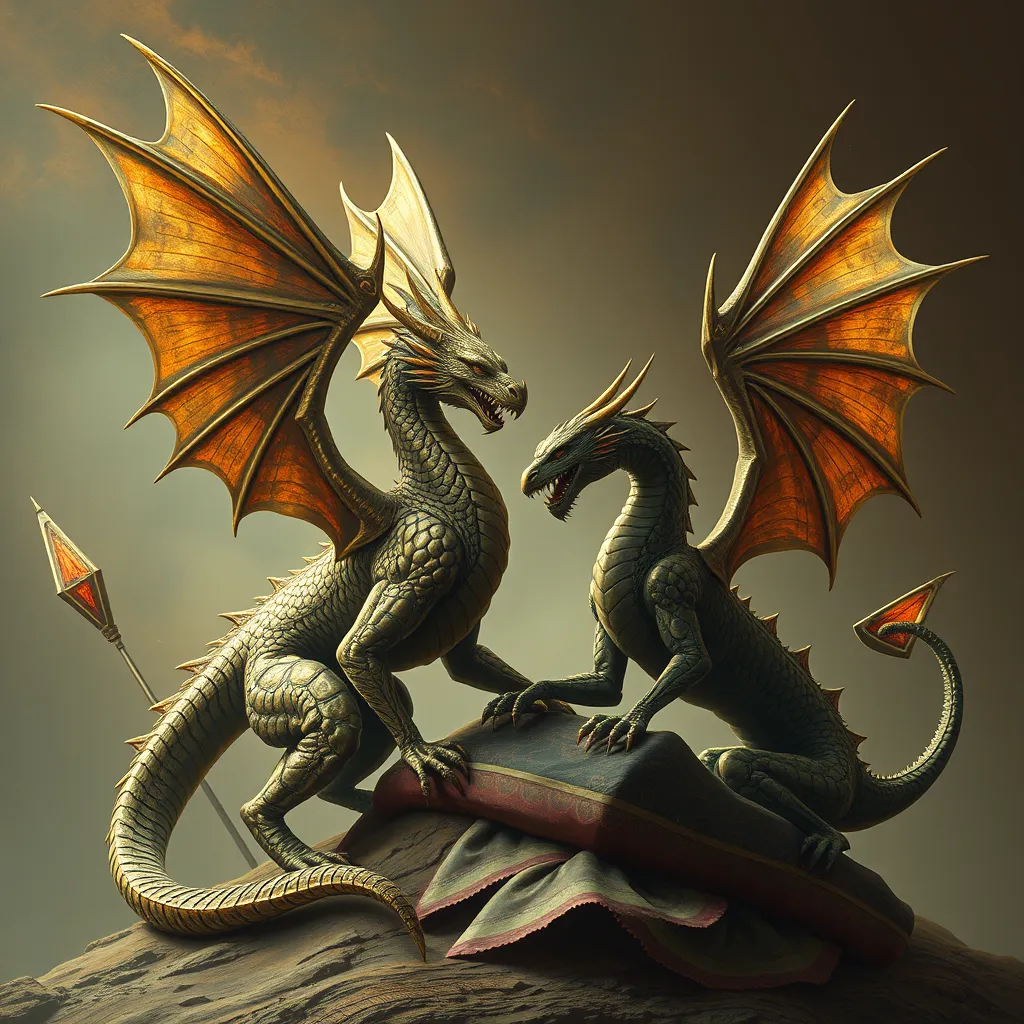The Kraken’s Curse: Examining the Monster’s Connection to Seafaring Misfortune
I. Introduction
The Kraken, a legendary sea monster, has been a staple of folklore and popular culture for centuries. Often depicted as a gigantic cephalopod lurking beneath the waves, the Kraken has inspired tales of terror and fascination among sailors and landlubbers alike. Its legendary status has made it synonymous with the dangers of the deep sea.
In addition to its fearsome reputation, the Kraken is often associated with the concept of a curse—a supernatural force that brings misfortune upon those who encounter it. This article aims to explore the historical and cultural connections between the Kraken and seafaring misfortune, delving into the origins of the myth, its psychological impact on sailors, and its persistent presence in modern culture.
II. The Origins of the Kraken Myth
The myth of the Kraken can be traced back to ancient sea monster folklore, with countless cultures recounting tales of mysterious creatures that dwell in the ocean’s depths. Historical accounts from sailors often described encounters with enormous beasts that would rise from the depths to drag ships and their crews down into the abyss.
In Scandinavian folklore, the Kraken rose to prominence in the 18th century. Descriptions of the creature varied, but it was generally portrayed as a colossal octopus or squid capable of creating whirlpools to sink vessels. These tales were fueled by the fears and uncertainties of sailors navigating uncharted waters.
As a symbol of the unknown, the Kraken embodies the dangers of the sea. It represents not just the physical threat posed by the ocean’s depths, but also the emotional and psychological turmoil experienced by those who traverse its waters.
III. The Kraken’s Role in Maritime Folklore
Throughout maritime history, sailors have recounted tales of their encounters with the Kraken, often emphasizing the creature’s terrifying power and unpredictability. These stories served multiple purposes:
- They provided explanations for unexplained disappearances of ships and crew.
- They acted as cautionary tales, warning future generations of the perils of the sea.
- They fostered a sense of camaraderie among sailors, bonding them over shared fears.
During the Age of Exploration, when vast stretches of the ocean were still largely unknown, the Kraken became a metaphor for sailors’ fears of the unpredictable nature of the sea. The stories of the Kraken echoed the anxieties of a time when the ocean was both a source of livelihood and a potential grave.
IV. The Psychological Impact of the Kraken’s Curse
Superstition has long been a significant aspect of seafaring culture. The belief in the Kraken and its curse influenced the behavior and decision-making of sailors. Many avoided certain areas of the ocean believed to be the Kraken’s territory, while others adhered to rituals to ward off misfortune.
The Kraken’s curse can be seen as a metaphor for the unpredictable nature of the ocean itself. Sailors faced numerous dangers, from storms to treacherous currents, and the belief in such a creature added another layer of fear to their perilous journeys. The psychological impact of these beliefs often manifested in:
- Heightened anxiety during sea voyages.
- Changes in navigational routes to avoid supposed Kraken-infested waters.
- The development of superstitions that persisted across generations.
V. The Kraken in Literature and Art
The Kraken’s influence extends beyond oral tradition into literature and art. Notable literary works featuring the Kraken include Alfred Lord Tennyson’s “The Kraken,” which portrays the creature as a powerful force of nature, and Jules Verne’s “20,000 Leagues Under the Sea,” where the Kraken symbolizes the deep mysteries of the ocean.
In visual arts, the Kraken has been depicted in numerous paintings, illustrations, and films. Its portrayal often emphasizes its monstrous size and the terror it instills in sailors. The Kraken’s image has evolved over time, influencing modern interpretations in:
- Fantasy literature and films, such as “Pirates of the Caribbean.”
- Video games featuring sea exploration and mythical creatures.
- Merchandise, including toys and clothing, that romanticize the creature.
These depictions have shaped public perception of maritime risks, reinforcing the idea that the ocean is a realm of both beauty and danger.
VI. Scientific Explanations for Kraken Sightings
Over the years, scientific investigations have sought to explain the origins of the Kraken myth. One possible inspiration for the Kraken could be the giant squid, a real creature that can grow up to 43 feet long and has been known to attack ships. Other possible explanations include:
- Unidentified marine phenomena, such as bioluminescent organisms or large jellyfish.
- Natural disasters, like tsunamis, which could have been interpreted as the Kraken’s wrath.
- Misidentifications of whales or other large sea creatures.
While these scientific explanations have reshaped the narrative surrounding the Kraken, the essence of the myth remains—reflecting humanity’s enduring fascination with the mysteries of the ocean.
VII. Modern Interpretations and Cultural Significance
Today, the Kraken continues to captivate popular culture. Its presence in contemporary media, such as films, television shows, and video games, keeps the legend alive. The Kraken serves as:
- A cautionary emblem of the unpredictability of nature.
- A source of entertainment that blends myth with modern storytelling.
- A reminder of the historical connection between humanity and the sea.
The enduring legacy of the Kraken highlights how folklore can shape cultural understanding of maritime dangers, while modern society grapples with the relationship between myth and reality in an age of scientific exploration.
VIII. Conclusion
This exploration of the Kraken’s curse reveals the intricate connections between myth, culture, and the history of seafaring. From its origins in ancient folklore to its modern interpretations, the Kraken symbolizes the fears and uncertainties that have long plagued sailors. The legacy of the Kraken serves as a reminder of the power of storytelling to explain the unexplained and to bond communities over shared experiences.
As we navigate our own lives, we can reflect on the relevance of the Kraken’s curse in today’s world—recognizing that while science continues to unravel the mysteries of the ocean, the allure of the myth remains, enriching our understanding of the profound relationship between humanity and the sea.



